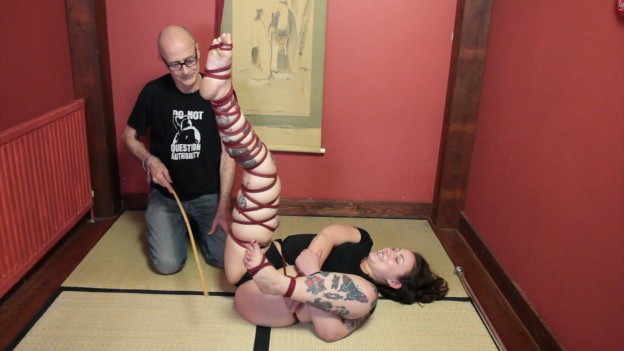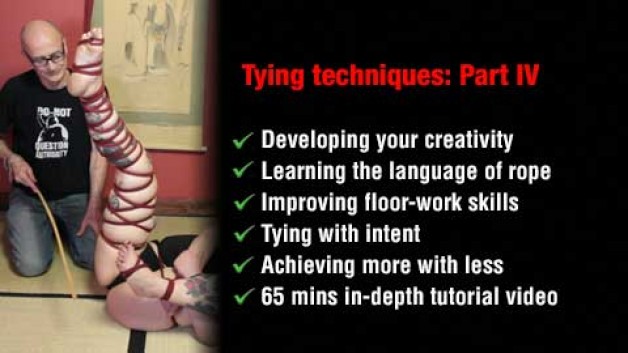Our latest shibari tutorial for ShibariClasses.com is the fourth part of ‘Tying techniques‘, in which you will develop the skills and discover how to use the ‘ingredients’ from the preceding classes. You will learn how to produce your desired results, by using them coherently according to the situation and with fluidity. Rope is a language so, to communicate effectively, fluency and nuance is essential.
In this shibari tutorial, you will move from the constraints of set ties towards creativity or, to put it another way, ‘joined-up tying’. In linguistic terms, graduating from stumbling through a phrase book to being able to express yourself fully.
In the demonstrations, you will see how kinbaku is more about ‘kokoro’ (heart/passion) than a specific way of tying and, even, that it does it have to be limited to rope. We’ll explore not only the use of various type of rope from nice to nasty but also show you what alternatives can be used and those to avoid.
To make this more accessible and to give you some ideas, I’m tying to chairs, rather than any fancy kit, to illustrate how to achieve your intent. Simple variations will help you understand how intent will determine how you tie, whether your purpose be exposure, sex, SM, access or interrogation. Intent is important since you need to know where you are going in order to find the best route or even get there at all.
As our model, Sophie, is quite masochistic, you will pick up quite a lot of semenawa (SM rope) techniques, a couple of which I learned from Kinoko Hajime and Kazami Ranki. That said, you’ll also find a lot of the softer side.
You’ll be surprised how much you can do with a few wraps, single and double-column ties and some basic frictions. Even more opportunities are afforded if you can throw in simple floor-based suspension. Don’t worry if you haven’t got a suspension point as I show you a safe way to improvise for around $10.
Take the next step in becoming fluent in rope.


